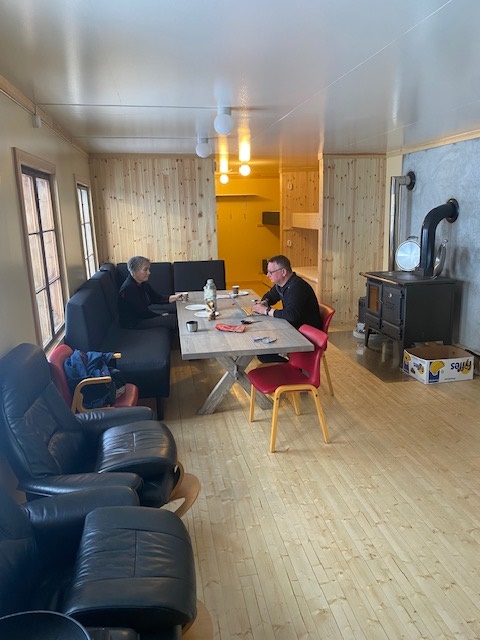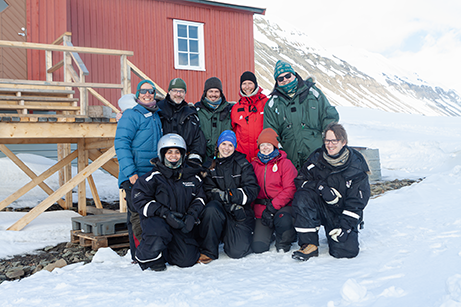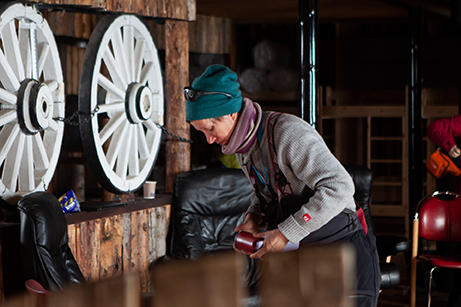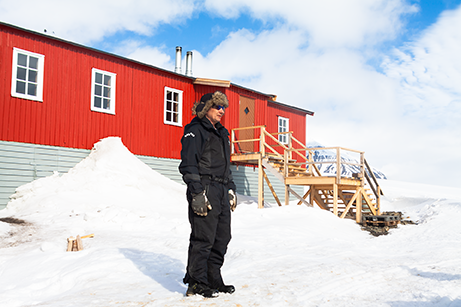Svea – a window of opportunity for Unis
This fall marks 107 years since Swedish miners established Svea at the head of Van Mijenfjorden in Svalbard. From the winter 2024, research will take over and a new chapter in the history of Svea will begin. If we seize the opportunities now, Svea could become an essential showcase for UNIS.

During Store Norske’s heyday, around 400 people worked there, and for many, there was a strong sense of belonging and identity tied to the isolated community southeast of Longyearbyen. Even though people began commuting between Longyearbyen and Svea in the 1990s, “Svea-rampen” is still in use, a term of honour for those who worked and lived permanently in the small mining town.
Therefore, emotions ran high when the authorities in 2017 not only decided to shut down mining but also wanted to remove all traces of human activity as a part of the nature restoration project. Gone are the Svea mine, Lunckefjell, the airport and apartment blocks, and three simple, listed buildings abandoned in the wilderness are left. In the future, UNIS will manage the area and the remaining buildings.
Svea was perhaps Store Norske’s tenderloin when it came to coal, but it will be our tenderloin when it comes to research, says Kåre Johansen
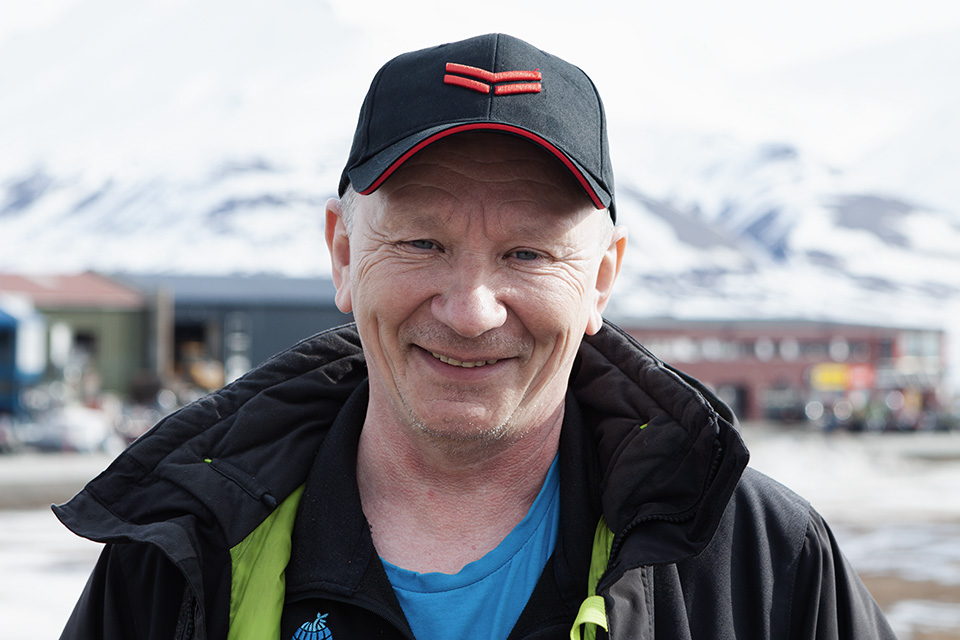
Personal commitment
When Kåre Johansen came to Svalbard in 1997, there was still activity in the mining tunnels. He worked as a guide and logistics manager for ten years at Spitsbergen Travel before starting as a UNIS technician. The trips to Svea have been many, and the friendships of the miners are good.
– At most, we had 1,200-1,400 overnight stays per year at Svea, and we got to know those who were out there well, Kåre explains.
It was not a given that UNIS would have access to Svea after the environmental project was completed because, initially, everything was to be demolished. Fred Schancke Hansen and Kåre Johansen seized the opportunity when it presented itself. In 2019, the work could start with Hansen as project manager and Kåre Johansen as UNIS’s representative out in the field.
Since then, they have spent countless hours with engineering, planning and application processes to restore three initially dilapidated buildings to become a small field station for researchers and students at UNIS, and Kåre praises the collaboration with both Store Norske and the government representative Martine Løvold. They helped navigate in a sometimes-difficult bureaucracy and allowed the project to go as smoothly as possible.
He answers yes to whether he feels he is taking part in Svea history with his work in the field. “The project is essential for the Norwegian authorities but also unique for UNIS.”
What can Svea become for UNIS?
UNIS has been using Svea for a long time, and many departments already found other relevant uses.
Access to ice is better in Van Mijenfjorden than in many other places, which makes the fjord essential for both marine biologists and glaciologist.
Arctic Technology has started a project to measure contamination of the ocean after mining and Arctic Biology and Arctic Geology is interested in studying how nature reclaims the areas that have been developed. For research, as well as the authorities, it is relevant to know how long the rehabilitation takes, especially in the Arctic, where the processes occur more slowly.
There are strict requirements for operating the station, and only UNIS can use the facilities. This also means opportunities for collaboration with other institutions with interests. The station consists of three buildings, with storage space and lab facilities in one and sleeping quarters, common areas, and sanitation facilities in the other two. Although the buildings have been significantly upgraded, there will be no luxury.
– During the mining period, people lived well, and there was a hotel, training facilities and even a bar. Now the off-grid field experience becomes more accurate, says Kåre.
“We have facilitated for accommodation during fieldwork, but now it is the researchers’ responsibility to make Svea what it will be in the future,” says Kåre Johansen.
Arctic Geology on Svea field station
For Arctic Geology Svea will return to be one of our core field locations. Access to surging glaciers around Van Mijenfjorden, to geological outcrops and to the tidal flat in Braganzavågen. Geologists are dependent on access to a variety of locations allowing us to study the regional differences of the geology and physical environment of Svalbard, and remote field stations like Svea is key to be able to bring students to see a better variety of processes, landforms, and outcrops. We will also continue long-term monitoring of the Kjellstrømdalen delta and Braganzavågen tidal flat, which was put on hold during the closure and reconstruction of the Svea landscape.
- Maria Jensen/Head of department Arctic Geology

